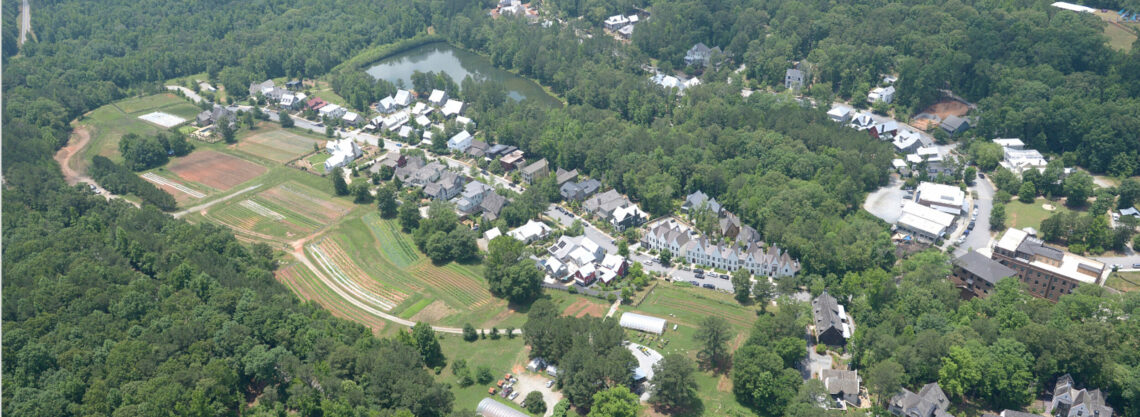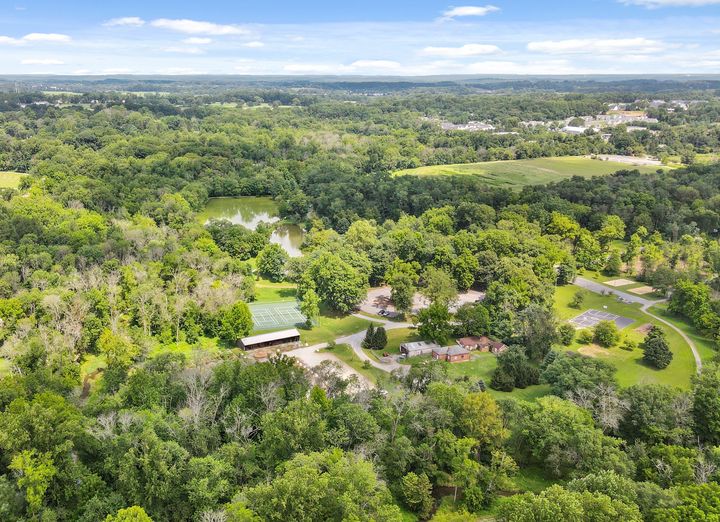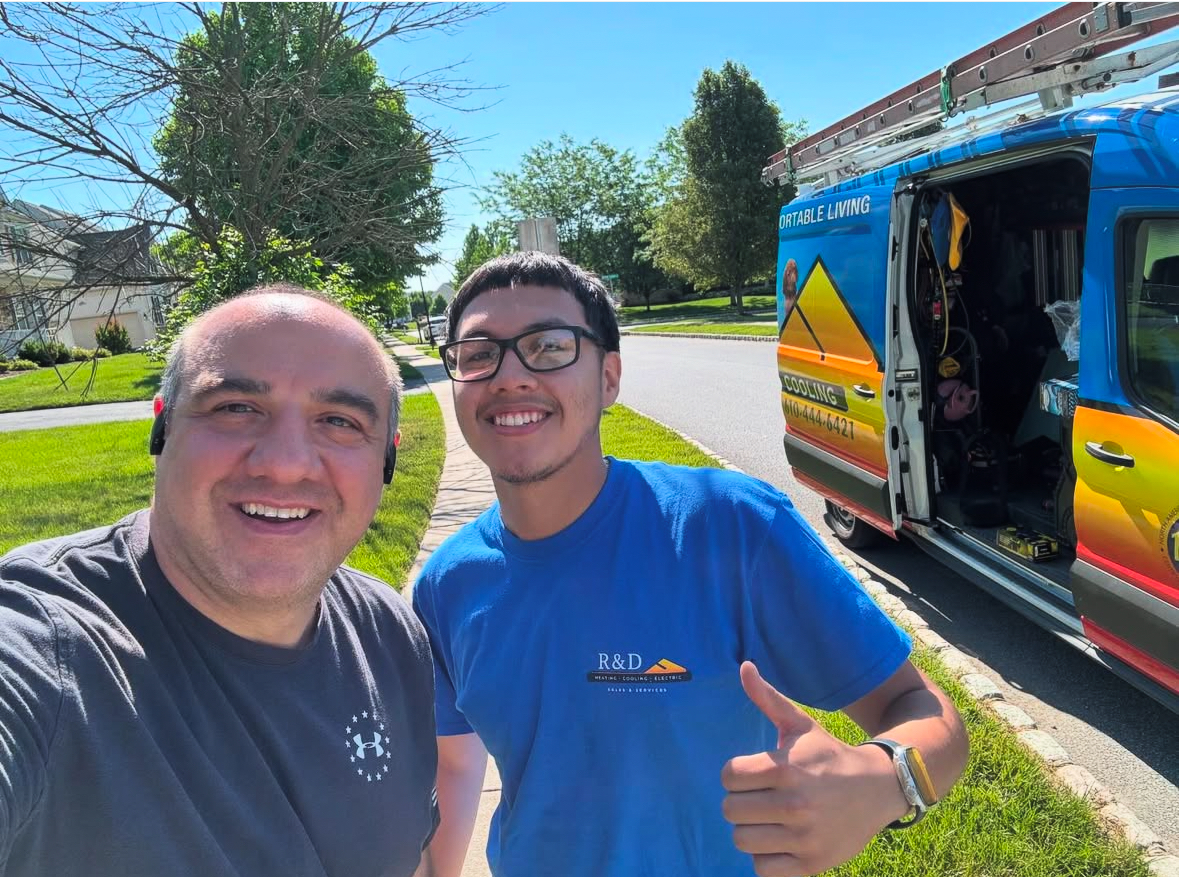Serenbe founder Steve Nygren urges us to pause and consider the irreparable damage being caused by our development patterns.
The central question for the final How We Build Matters Speaker Series event on May 17th was whether development and land preservation can exist together. The answer, says Nygren, is a resounding “yes.” Thoughtfully designed and vibrant, walkable communities are popping up in different places around the country. They’re providing housing for more people, disturbing only a fraction of the land around them, and benefitting both people and the environment in multiple ways. While most of these places have been built within the last few decades, they also elicit a certain déjà vu. “We love the great places we built 100 years ago—before there were all these regulations that prohibit us from building them anymore,” says Nygren. Our future depends on going back in time.
Nygren, a former restauranteur who grew up on a farm in Colorado, is as surprised as anyone to find himself an award-winning developer at the forefront of a movement to build better communities and bring environmental practices into the built environment. It all began twenty-five years ago when, after retiring to a rural retreat he’d purchased south of Atlanta, he decided to fight to keep the bulldozers out of his own backyard.
Serenbe, the community he built, is award-winning, world-renowned—and unlike anything that had been done before. “Fifty percent of what’s there in Serenbe today wasn’t allowed twenty years ago,” he says. Nygren became a student of English land law, gathered experts from around the world, got zoning laws changed, capitalized on the opportunities offered by transfer development rights, and more. He also kept asking: “Why not?”
Nygren began by building relationships, bringing disparate groups including landowners, developers, and preservationists together over peach cobbler. “Often when you put different people in a room with a map and a blank slate they come up with the same plan,” he says with a smile. “When you listen to the land, it’s common sense.” This new way of building yields twenty percent more housing on thirty percent of the land, leaving seventy percent of the land undisturbed and preserved for the community to enjoy. The Serenbe model proves not only that development and preservation can co-exist but that, in fact, they need to.
“Serenbe is all mixed use and walkable—it’s the way of the future,” Nygren says. In most places, however, outdated zoning regulations prohibit building places where, for example, multiple daily car trips are unnecessary. “We’re so afraid of having mixed use that we’ve sanitized the vitality out of where we live. But baby boomers are moving to walkable communities, and young people want the same thing.” Anyone searching in vain for a “for sale” sign in the Borough of Kennett Square, for example, can attest to the economic viability of walkable communities. Build it—thoughtfully—and they will come.
A real, magical place
People who visit Serenbe sometimes ask if it’s real. This doubt, though understandable, might reflect a crisis of confidence in our ability to build beautiful, sustainable, and vibrant places. It might also be a capitulation to the savage land-devouring tactics and cheap, short-sighted developments that are so ubiquitous as to seem normal—or at least necessary.
While it sounds too good to be true, Serenbe is nothing short of magical. Every sight line is a breathtaking composition of nature and architecture—a view through an archway to the forested hills beyond; a path leading over a woodland footbridge and on to another hamlet; a vibrant main street with a courtyard sculpture garden tucked behind the bake shop; a curving road to a park edged by a school, a general store, and a farmers market. Sculptured iron lampposts reflect the aesthetic of each village and also serve as subtle hints for wayfinding.
As a built environment, Serenbe reflects major thought-shifts like clustering and building with the land, incorporating design guidelines that allow for a diversity of architectural styles and housing types and sizes that together create a seamlessly pleasing and human-scale aesthetic. The Hampshire village of Selborne provided inspiration, as did towns in Europe.
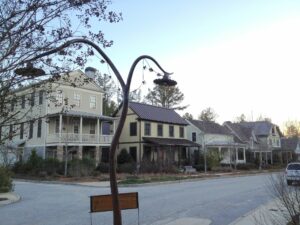
Sculptured iron lampposts reflect the aesthetic of each village and also serve as subtle hints for wayfinding.
Serenbe also benefits from creative and cutting-edge, but still beautiful, solutions to issues like stormwater. In fact, the most photographed spot at Serenbe is the wastewater treatment plant—an elevated wooden walkway surrounded by trees and tall grass. The setting for countless photos of weddings and other special occasions has also become a model for water conservation and design. The almost imperceptible details—like the lampposts, the undulating road following the natural topography of the land, or underground trash cans, combine to create a place of awe.
Nygren describes the major national media attention Serenbe has garnered as exciting, “but it’s also depressing that we’re so unusual,” he says.

This much-photographed boardwalk goes over Serenbe’s wastewater treatment facility.
The human costs of development
The land plan guides the experience in this kind of development, Nygren says. That means, for example, saving trees within five feet of foundations, having curved streets, and disallowing lawns. Nygren talks with affection about the “free range kids” at Serenbe who are enjoying the kind of neighborhood-roaming, tree-climbing, field-exploring childhood that older generations today talk about with wistful longing—as if it were impossible to bring back. Among the 250 children who live at Serenbe, there isn’t a single reported case of asthma—which is, Nygren notes, “statistically impossible in the United States today.”
Nygren points to a direct correlation between the isolation and physical and mental ill health created by development patterns that, for example, place large homes in the middle of one-acre chemically dependent lawns. He connects the rising costs of healthcare—up from three percent of the GNP in 1950 to thirty percent today, and rising—to the way we build. “We’re sicker than we’ve ever been . . . and yet, why do we keep doing the same things? It’s got to change. We can’t keep it up.”
The language used to talk about these issues is very important, Nygren says. While Serenbe has been voted one of the top ten new urbanist communities, new urbanism isn’t always environmentally focused. Among the top ten environmental communities, Serenbe is the only one with density. Serenbe, with its organic farm, also spawned the term “agrihood.” “We’re the only community connected with all three movements,” Nygren says, and so he’s become a thought leader in the biophilic movement, which encompasses all three and more. Edward O. Wilson defined biophilia, literally “love of life, or living things” as “the innate affiliation we have with nature and other forms of life.” Many who are unfamiliar with the term will find themselves aligned with its precepts. The tenets of biophilic design include inspiration from nature, complexity and diversity, connection and integration, resource efficiency, and resilience.
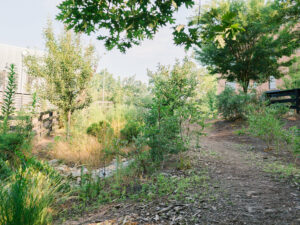
Bioswales throughout Serenbe naturally route stormwater.
A vision for Chester County
We often hear conversations about legacy and the impact on future generations when we build public buildings. The new Kennett Library is one such example. But the buildings where we live could, and should, last as long and leave a beautiful and sustainable legacy for future generations.
We can build great places. Serenbe is just one example of many around the country that are demonstrating what is possible when people create a vision for a beautiful and sustainable place that follows and enhances the landscape instead of destroying it, when they challenge existing and outdated zoning codes and regulations, and when they invest in building regenerative green infrastructure that will continue to serve the community.
Chester County has led the way in land preservation efforts over the past decades, and with over 30 percent of land preserved and an increasingly pressing need for attainable housing. How we build matters. It’s a question of equity, of professionals being able to live in the communities where they work, of providing high-quality and dignified housing options for everyone, of connecting people to nature and to each other. It’s important that preserved land, which is funded by millions of taxpayer dollars, is accessible to everyone and not simply buffering the properties of the landed gentry. Serenbe and other developments like it offer us a vision for places of awe that we could build here, integrating the magic of the beautiful Brandywine Valley landscape.
We need developers who embrace this vision and want to build better places. But often developers who do want to do exactly this cannot—and most of it comes down to zoning restrictions that have been on the books for the past few decades and that make no sense today. In Pennsylvania, these changes are all made at the municipal level by commissions and officials in our boroughs and townships. We urgently need citizens to advocate for the kind of development they want to see. Kennett Collaborative has put together this short guide to help people get started—to be inspired by what other places have done, to have conversations with their friends, neighbors, and elected officials, and to show up and speak up at public meetings where these issues are discussed and decided.
You can watch the recording of Steve Nygren’s How We Build Matters presentation here.
